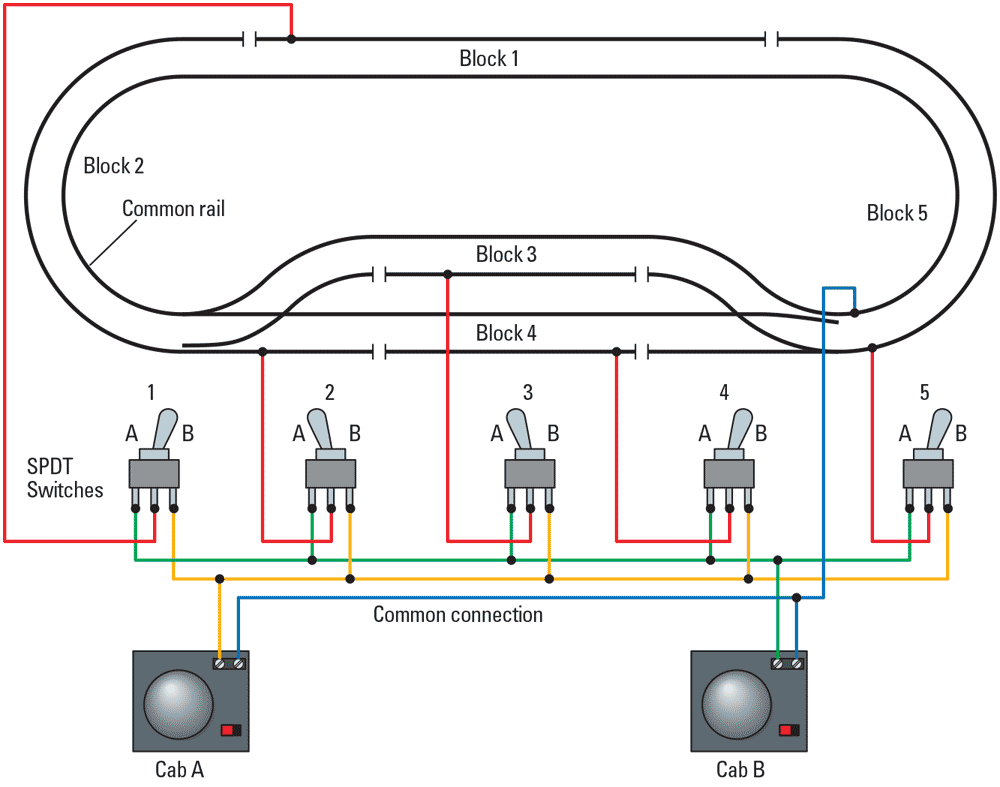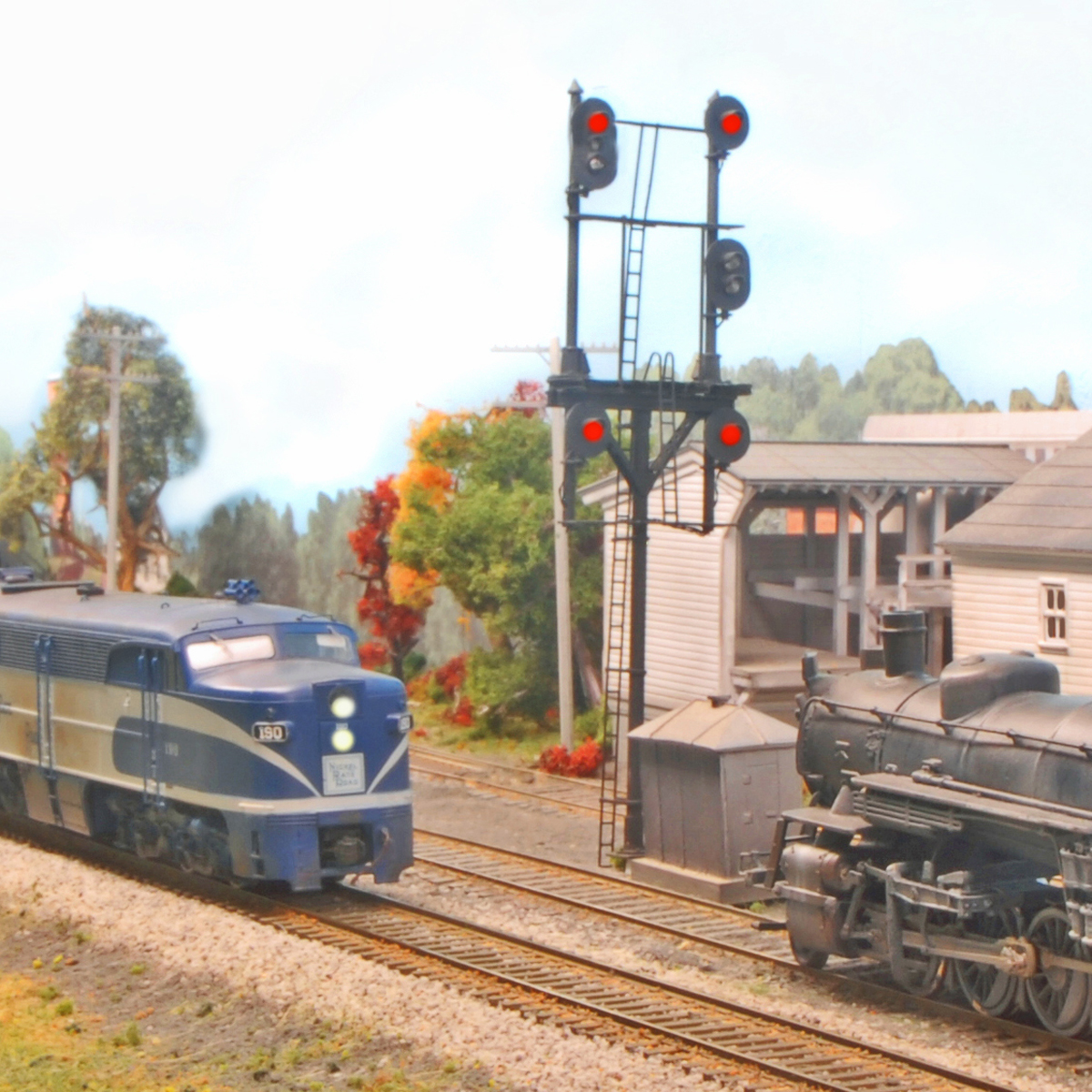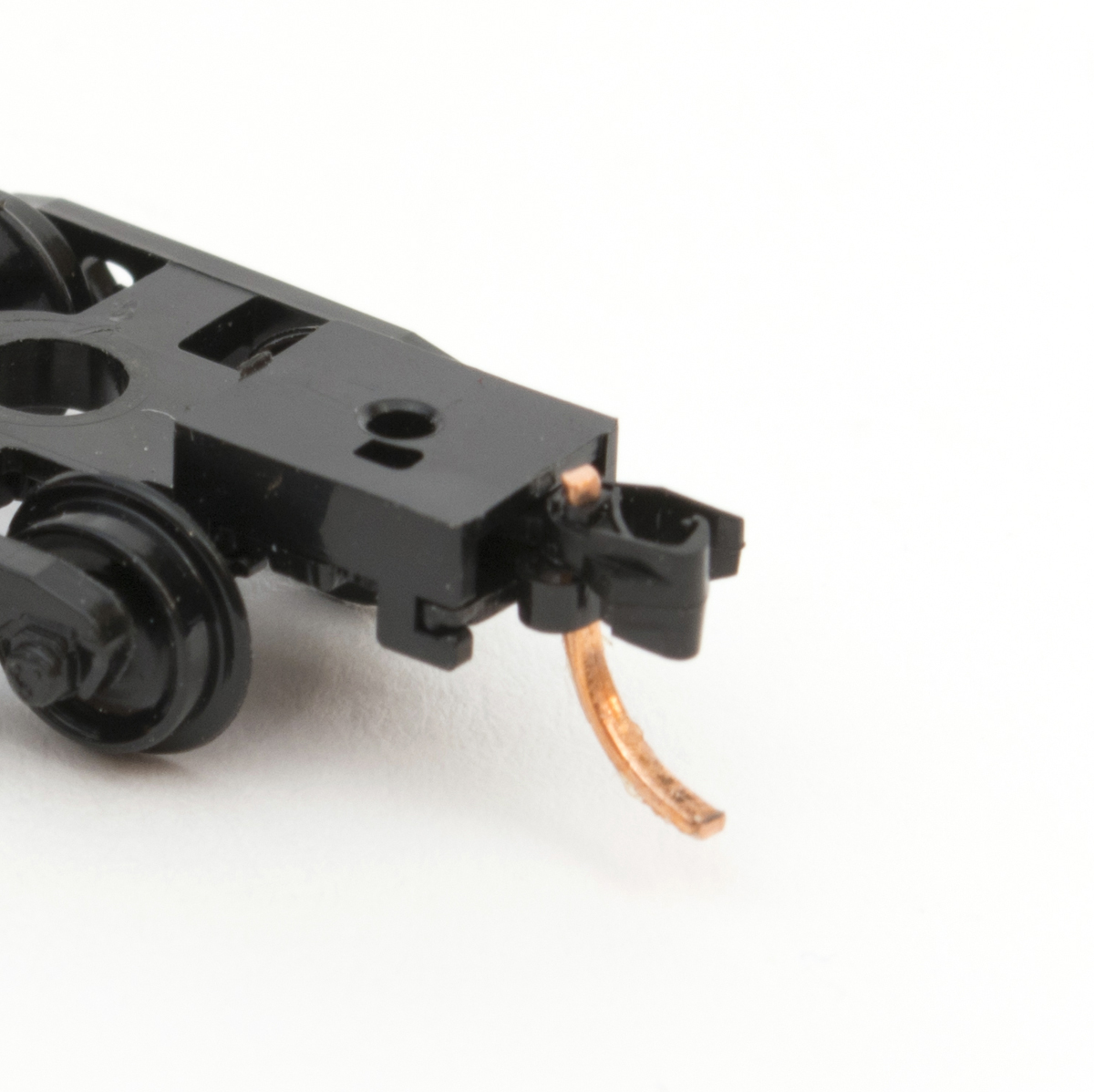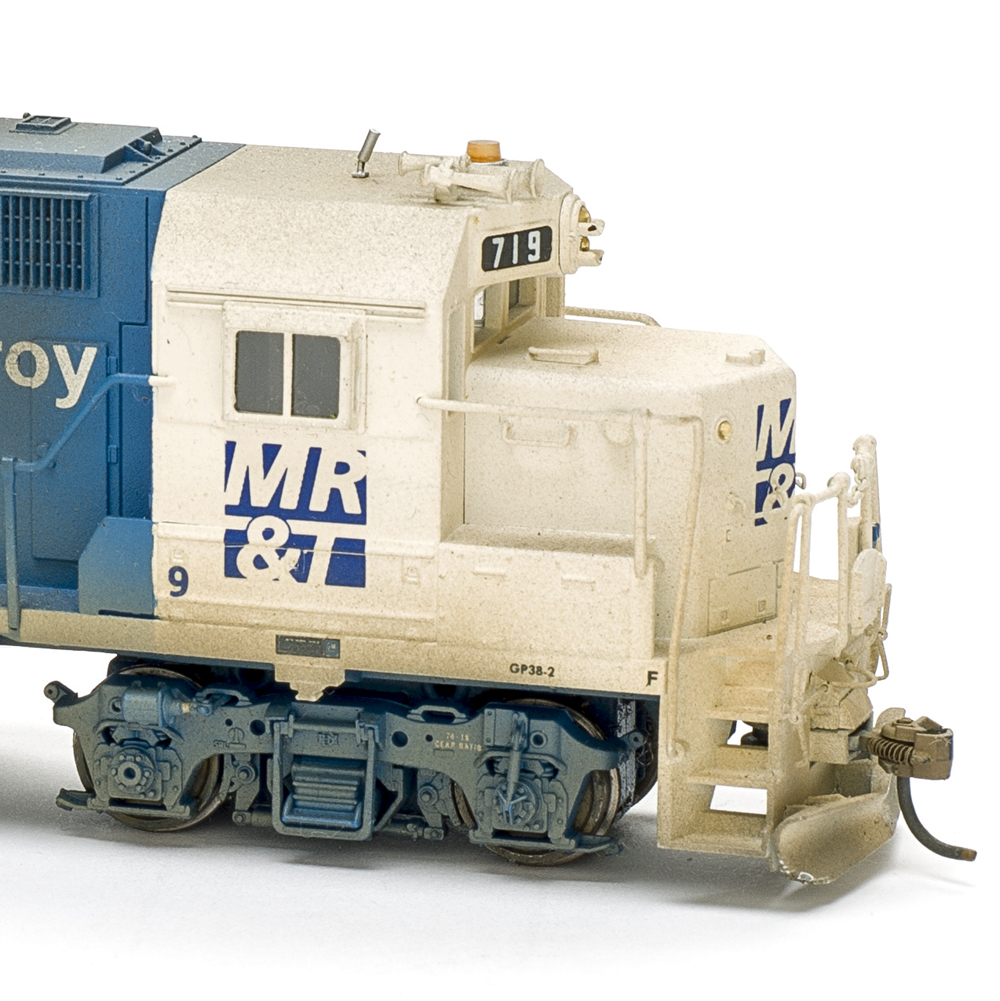
Q: I’m experiencing a problem with trains that stop between wiring blocks on my N scale train layout. I have two identical direct current (DC) power packs and am using Kato Unitrack throughout the layout. One power pack runs the main line while the other operates the yards. The problem is that whenever I attempt to move trains from the main to the yards or vice versa, the trains stop between wiring blocks. Both power packs are aligned so that trains should be going in the same direction when moving between main and yard, and both are set at the same speed, yet everything stops when trying to go from one to the other. The main and yards are separated by double insulated rail joiners, so there should be no electricity leaking from one power pack into the other’s jurisdiction. What am I doing wrong? — Irv Soden, Vestal, N.Y.
A: You might think that isolating the main from the yards with insulated rail joiners would keep the two wiring blocks separate, but when a locomotive crosses from one block to the other, it bridges that gap. Since electrical pickups from both trucks feed to the locomotive’s motor, you’re basically creating a short circuit between the two power packs. In fact, I’m surprised you haven’t yet fried a locomotive when doing this. Your power packs must be sensing the short and shutting down when that happens, protecting the locomotive.
What you need to do is guarantee that an engine never bridges a gap between blocks controlled by two different power packs. You can accomplish this by installing a few double-pole double-throw (DPDT) switches between your power packs and your wiring blocks. You need to wire them so that either power pack can control either track block.
When you want to send a train into or out of the yard, flip the switches so both blocks are controlled by the same power pack. Drive the train so all the locomotive’s wheels are completely in the other block, then — and only then — flip the switch to give control over to the other power pack. If they aren’t set at exactly the same voltage, the train may suddenly speed up or slow down. You can avoid this lurch by bringing the train to a stop before switching power packs, perhaps justifying the move as the train crew handing off the train to the yard hostler.
If you want to be able to control both parts of your layout simultaneously and hand off locomotives from one to the other on the fly, you need to create a third, separate track block between the two. This transition block needs to also be wired with a DPDT switch so it can be controlled by either power pack. First, flip the switch to control the transition block from the same power pack as the block where the train is. Drive the locomotive forward into the transition block, then switch the block to control of the other power pack. You may still get a lurch as the engine is switched over from one pack to the other unless you stop it first. But under this scheme neither the main nor the yard needs to change power packs, so both can continue operating while trains move back and forth between them.
Look up the article “How to wire a layout for two-train operation” in our July 2011 issue for more about wiring your railroad for DC block control. You’ll find even more useful information in Larry Puckett’s book Wiring Your Model Railroad, which is available in the Kalmbach Hobby Store.
Send us your questions
Have a question about modeling, operation, or prototype railroads? Send it to us at AskTrains@Trains.com. Be sure to put “Ask MR” in the subject.













